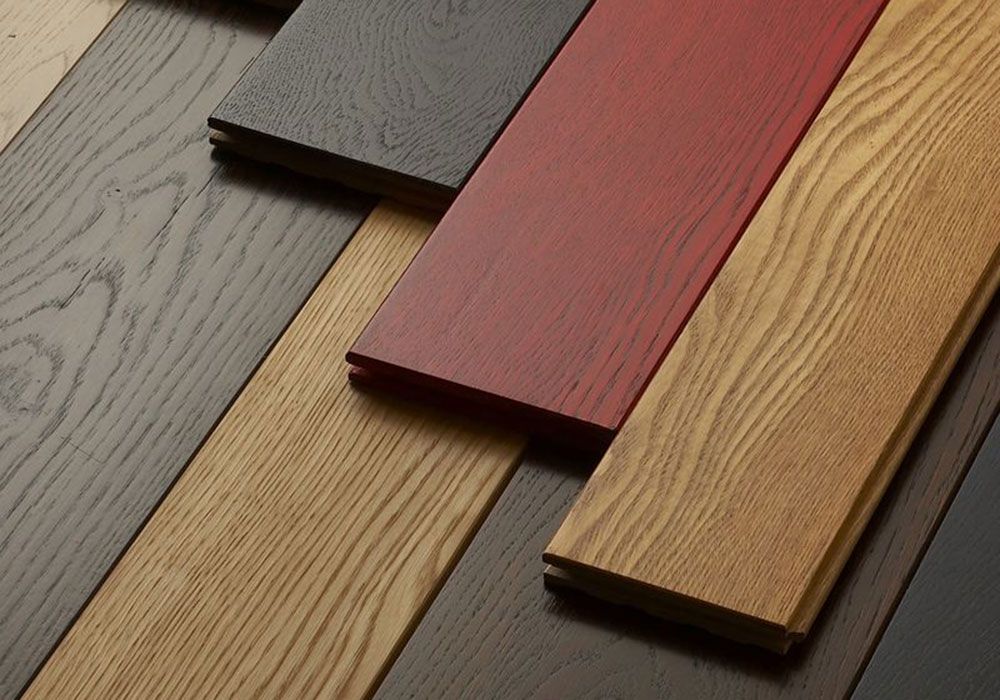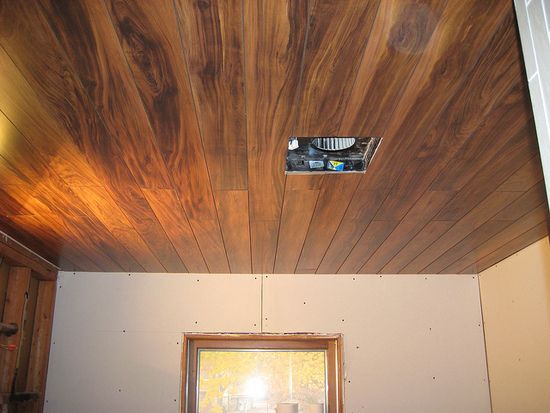Installation of infrared flooring under laminate
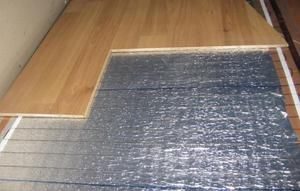 Today, laminate is not inferior in popularity to linoleum when it comes to home flooring. With its pleasant appearance and low price, this easy-to-install material has appealed to millions of people around the world. However, nothing is perfect. Everything has disadvantages, and laminated parquet also has them.
Today, laminate is not inferior in popularity to linoleum when it comes to home flooring. With its pleasant appearance and low price, this easy-to-install material has appealed to millions of people around the world. However, nothing is perfect. Everything has disadvantages, and laminated parquet also has them.
If you put such a coating on bare concrete, the floor in the house will be cold. Heating may raise the temperature in the room, but it will not make the flooring warmer. However, this shortcoming is very easy to get rid of. All you need is infrared insulation of the laminate.
The content of the article
How does an infrared floor work?
There are several types of floor insulation in the house:
- Electric heating.
- Water heating.
- Infrared film.
What is the difference between them? How does infrared heating work? The technologies underlying each type of heating will be clear to anyone. A water floor, for example, is heated by hot water flowing through pipes located under the covering. Electric heating is carried out using heating cables.
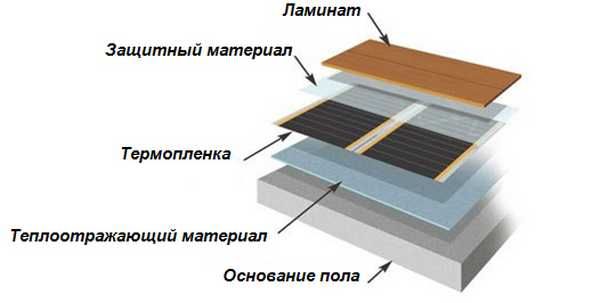
Infrared heating is somewhat similar to electric heating in terms of its operating principle. The difference is that instead of cables, special heating elements are used. They emit safe infrared radiation, the wavelength of which ranges from 5 to 20 microns. In fact, this heating principle is very similar to ordinary solar rays.
The heating elements consist of two sheets of polyester film, between which there are strips of carbon paste. They are the ones who emit heat. They are connected to copper conductors with silver-plated contacts. Since the connection is parallel, even if one tape breaks, the others will continue to work.
Do-it-yourself installation of a warm infrared floor under a laminate
Installing infrared heating differs little from installing any other insulation, but each has its own nuances. Typically the work plan looks like this:
- A drawing of the location of the films is created. A standard roll is cut only in clearly defined places, so it is important to measure the room and place the elements correctly.
- Thorough cleaning is carried out, thermo-reflective material is laid. Energy and heat should not be wasted, and therefore bare concrete should not be heated. To avoid this, foil insulation is needed.
- Heating sheets are laid, unused contacts are insulated, and contact clips are connected.
- The thermoregulation unit is installed, the wires are connected, and a test run is performed.
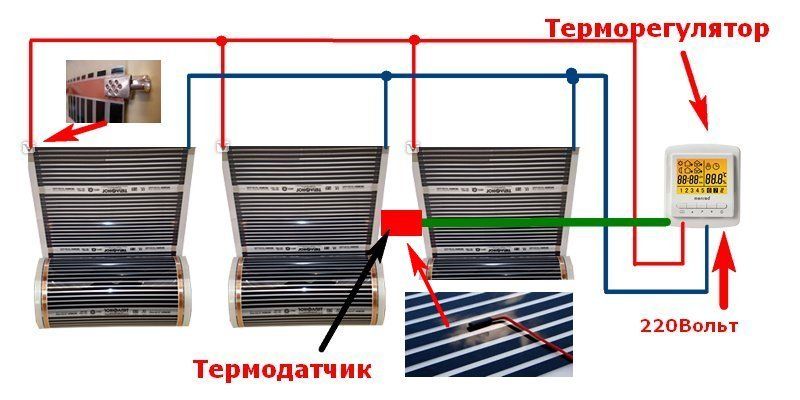
It looks like nothing complicated. However, there are several points that inexperienced installers often forget about. The sheets cannot be placed close to walls and stationary appliances - a distance of at least 25 cm is required. The film cannot be placed under furniture, and the distance between the heating elements must be at least 5 cm. It is also advisable to lay waterproofing material between the laminate and heating tapes.
ATTENTION! The rolls are laid out according to a clearly defined cutting pattern that must not be violated. By cutting the film in other places or simply carelessly, you can easily damage it and render it unusable.
Benefits of infrared floor
So what are the benefits of infrared heating? After all, such a system costs more than a water or electric one, which means it must pay for itself. And it pays off, because it has a number of different useful properties and advantages that distinguish this type of heating from others.
The main advantage of an infrared floor is its compactness and convenience. The film takes up only a couple of millimeters, it does not require a screed, which means the surface level will hardly rise. This is a significant advantage, because such a system can be safely installed in multi-story buildings.
In addition, infrared flooring is very economical. It consumes much less electricity than other options. In addition, it is easier and faster to install, heat is distributed more evenly, and the tapes themselves can serve you for decades.
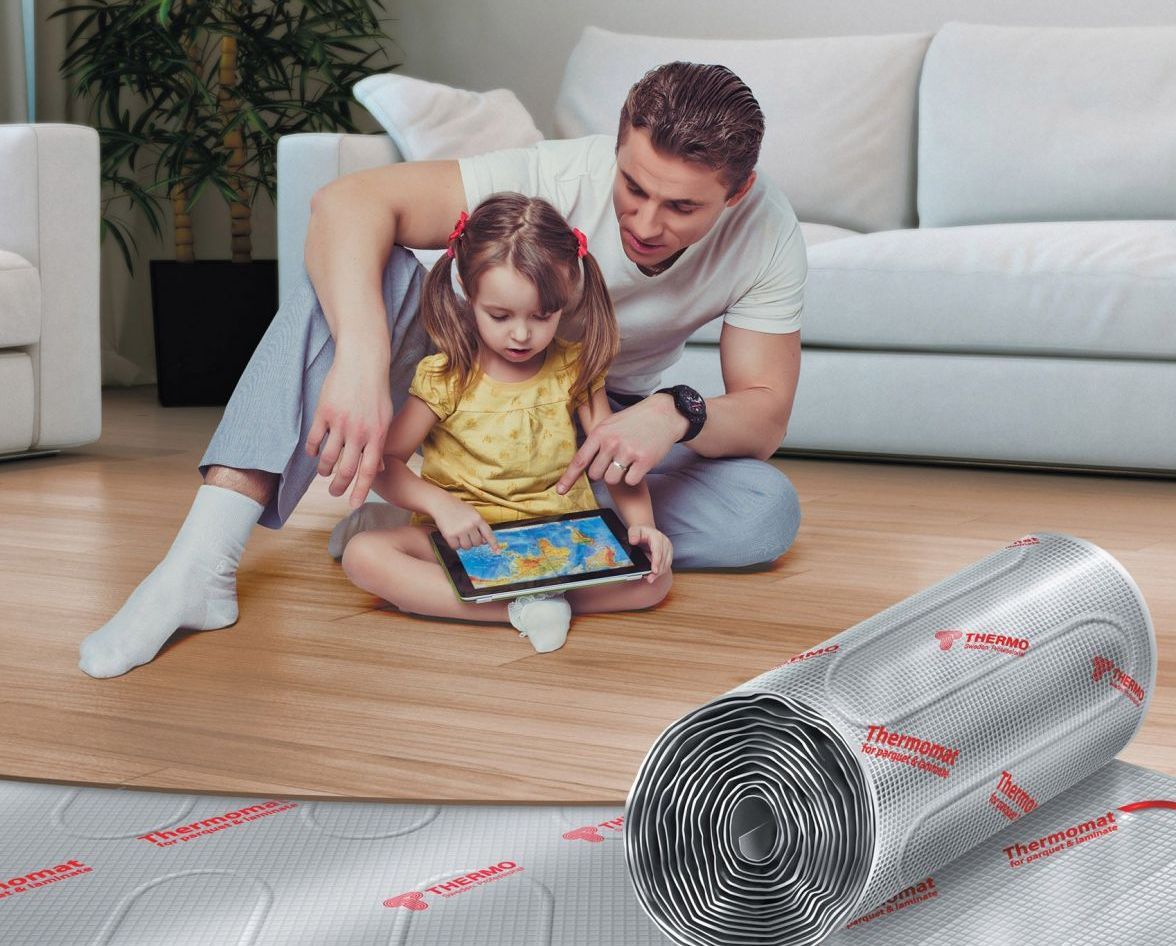
To summarize, infrared heating has the following advantages:
- Economical.
- Easy to install.
- Even heat distribution.
- Durability.
The only counterbalance to the advantages is the high price, which quickly pays off after a couple of years of use. The benefits are obvious.
Which laminate to choose for subsequent installation
However, when installing infrared films, it is important to remember that the coatings differ in characteristics and not everyone can withstand heating. Different types of laminate have different wear resistance classes, chamfers, and thickness. All this must be taken into account during installation.
IMPORTANT! Remember that there are coatings that are not at all designed for laying heating underneath them.Even low temperatures can accelerate their wear.
Naturally, the most successful options would be thick, unvarnished coatings with high heat resistance. Otherwise, the material will quickly become unusable. Although this is usually not a problem, because the temperature of the heating elements is already low.




